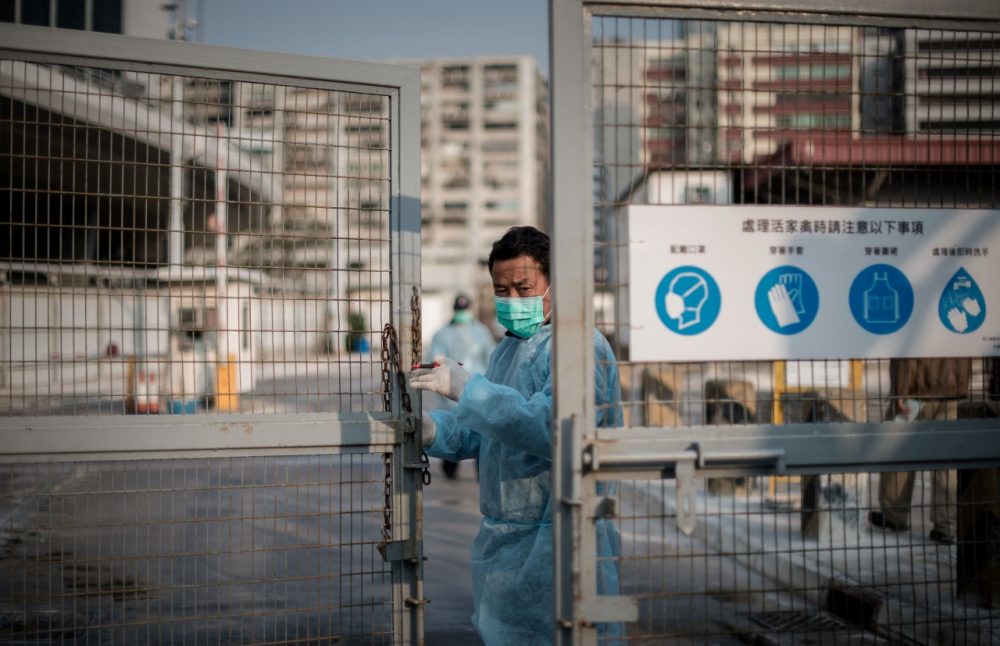Advertisement
CDC Director: China Bird Flu Outbreak Closely Watched
Resume
H7N9, a new strain of the bird flu, is spreading through China in advance of celebrations of the Lunar New Year, this Friday. Both travel and chicken sales spike in China around this time.
The strain jumped from birds to humans last year, and according to the World Health organization, 246 people in mainland China have been sickened and 56 people have died since the disease was first reported in Shanghai. Cases have also been reported in Taiwan and in Hong Kong.
Today officials began culling 20,000 chickens after a sample of live chicken imported from mainland China tested positive for the new strain of virus. H7N9 is reportedly less virulent but more deadly than H5N1.
Tom Frieden, director of the U.S. Centers for Disease Control and Prevention (CDC) and administrator of the Agency for Toxic Substances and Disease Registry, tells Here & Now's Jeremy Hobson that the outbreak is worrisome, but China is being more transparent than ever.
Interview Highlights: Tom Frieden
On the difference between the current bird flu strain and past strains
"There are a few big differences. Probably the biggest is that H7N9 doesn't make the birds sick — even though it’s highly lethal for people, it’s not lethal for birds, so that actually makes it much more difficult to control. When you have sick birds with H5N1, you can cull the flock and stop the spread. But to track H7N9 is much more challenging because we need to test the birds and track what’s happening."
On what's known about the current flu strain and how it spreads
"We don’t understand completely how it’s spreading from birds to humans. We do know that the virus itself has certain genetic characteristics that make it relatively easy for it to spread from the birds to people. Fortunately it does not yet have the genetic characteristics to spread from one person to another person, except if there’s very intense close contact, such as someone who is caring for someone who is very sick, or are close in the family. But it’s not spreading person to person – yet."
On how China works with the rest of the world in preventing the spread of disease
"Ever since the SARS outbreak hit 10 years ago, we've worked very closely with the Chinese government. They came to us and they said, 'what can we do to strengthen our system,' and we helped them establish what they call in Chinese the 'China CDC' — even though 'CDC' doesn't mean anything in Chinese, that’s what it’s called. And we've helped them establish systems to monitor influenza, to track the virus, to test it in the laboratory and to sequence the genome. And because of those systems, within days of H7N9 emerging, they had posted on a site accessible to flu experts around the world and we were able to immediately download the sequence, make a diagnostic test and begin work on a vaccine. So that kind of collaboration over the past 10 years has helped China respond very clearly and effectively and very transparently in this case, and it has also helped us be better prepared.
On the importance of public health action in preventing the spread of disease
"There are always things we can do to reduce the burden of an outbreak. Whether that’s preventing it effectively, finding it sooner, isolating people, supporting people who are affected by it. And what we know is effective public health action can make an enormous difference. Public health investments are a best buy in the health sector because we are able to stop problems before they spread, we’re able to prevent them from occurring in the first place and we’re able to find them quickly, so we’re able to warn people and take appropriate action."
Guest
- Tom Frieden, director of the U.S. Centers for Disease Control and Prevention. He's also administrator of the Agency for Toxic Substances and Disease Registry. He tweets @DrFriedenCDC.
This segment aired on January 28, 2014.